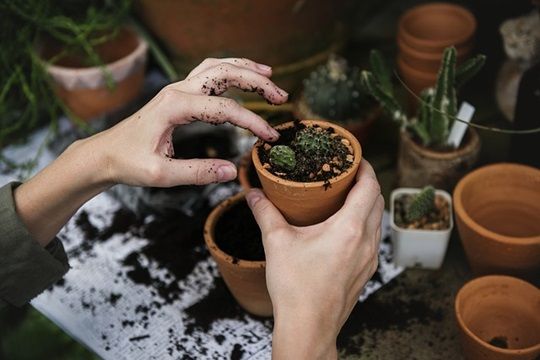Home Gardening Tips
Growing and tending a garden can have a variety of benefits, both short- and long-term, for an individual or an entire family. Even people who don't own extensive real estate with a sprawling plot of land can grow a flower or vegetable garden. With a vegetable garden thriving in a yard or in containers, a gardener of virtually any age can anticipate harvesting fresh and nutritious vegetables. Even a flower garden has a variety of benefits, since gardening can engage the body in beneficial exercise and the flowers are pleasant to look at and smell.

Gardening Basics
Getting started growing flowers or vegetables in a yard or containers requires a few tools and materials. Although some gardeners collect a wide array of tools, it's possible to begin gardening with just a few basic implements. A rounded shovel, hoe, garden fork, and hand trowel are common tools that will help gardeners of all ages work the soil. Many people also appreciate having some type of wheelbarrow or garden cart to assist with moving heavy loads around the yard. Gardening gloves help keep hands clean while digging in the dirt. Starting a vegetable or flower garden also requires either seeds or seedlings. After planting the seeds or seedlings, it's important to keep the soil evenly moist to help with germination and growth.
- Gardening Tools 101 (PDF)
- Less Expensive Sources of Plant Material, Amendments, and Tools (PDF)
- Choosing Garden Tools
- Planning a Garden
- Important Things to Consider When Planning Your Landscape Design
- Caring for Your Soil Tip Sheet
Flower Gardens
A flower garden can include annual flowers that live for one season or perennial flowers that will return year after year. Whether annual or perennial, flowers have specific growing requirements that gardeners must observe to ensure that the plants thrive. Some flowers need full sun, which means at least six hours of direct sunlight every day. Other flowers will grow adequately with only partial sun, which involves a mixture of shade and sun throughout the day. Other flowers need shady conditions, which means they cannot have any direct sun or they will suffer. Flowers will usually have specific soil and moisture requirements as well, so gardeners must plant flowers that match the type of soil that exists in their yard and the amount of rainfall that is typical for their location. Because perennial flowers enter a dormant stage over the winter, these plants have additional requirements based on the temperatures they can withstand during dormancy. Regions of the United States are divided into hardiness zones, and perennials are labeled to indicate which hardiness zones they require.
- Using Color in Flower Gardens
- Perennial Garden Design
- Planning a New Flower Garden (PDF)
- Perennial Gardening
- Get a Head Start on Your Summer Flower Garden
- Planning a Butterfly Garden
Vegetable Gardens
Growing vegetables can be a year-round activity, depending on the location and the growing methods used. Some gardeners like to set up an indoor growing area with containers and grow lights, coaxing vegetables to grow even during the winter. Other gardeners prefer to focus their efforts on outdoor growing during the warm summer growing season. Plants grow and produce fruits and vegetables differently, and they have varied growing needs. For example, some plants are considered "cool season" plants, producing their bounty during the spring and fall. Some examples of these plants include lettuce, spinach, onions, and peas. Other plants thrive in the warmest months of the summer, such as tomatoes, beans, and eggplant. A gardener's outdoor growing season depends on the climate of their location, so it's important to know the hardiness zone when planning and planting a vegetable garden.
- Vegetable Gardening: A Beginner's Guide
- Vegetable Garden Tips
- Planning a Garden
- Vegetable Garden Calendar
- Vegetable Garden Growing Tips (PDF)
Gardening Projects for Kids
Involving kids in gardening is an ideal way to spend quality time and teach children about how plants grow. A gardening project can be as simple as planning a small vegetable garden, or a family can plan a special gardening project such as creating a pollinator or butterfly garden, which involves choosing specific plants that will attract pollinators such as bees and butterflies. Children could also be involved with planning a kitchen garden, which usually involves growing herbs that will be used to prepare meals.
- Growing Vegetables in Home Gardens (PDF)
- Family Gardening (PDF)
- Planning a Pollinator Garden
- Kitchen Garden Checklist
- Plant a Butterfly Garden
By: Jim Olenbush
